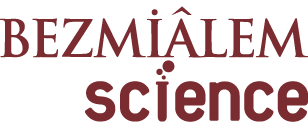ÖZET
Sonuç:
İki bin dokuz yılında Carruthers ve ark. tarafından geliştirilen ölçeğin, Türkiye’deki hemşirelik öğrencilerinin hasta güvenliğine yönelik tutumlarını ölçmek için kullanılabilecek geçerli ve güvenilir bir ölçme aracı olduğu bulunmuştur.
Bulgular:
Analiz sonuçlarına göre orijinal ölçeğin genel olarak faktör yapısına uymadığı görülmüştür. Ölçek, 22 madde ve 4 faktörden oluşmaktadır. Ölçeğin toplam varyansı %65,14’tür. Güvenilirlik analizi sonucunda ölçeğin Cronbach alfa katsayısı 0,91 olarak hesaplanmıştır.
Yöntemler:
Metodolojik olarak tasarlanan çalışma, Şubat-Nisan 2019 tarihleri arasında gerçekleştirilmiştir. Araştırma, İstanbul’da bir özel üniversitenin hemşirelik bölümünde okuyan üçüncü ve dördüncü sınıf öğrencileri (n=226) ile etik onay ve kurum izni alınarak yürütülmüştür.
Amaç:
Tıbbi hatalar, dünyadaki tüm sağlık kuruluşlarında çok önemli bir sorundur. Hasta güvenliği kültürü oluşturmak tıbbi hataların azaltılmasında çok önemlidir. Hemşireler hasta güvenliğini sağlamada özel bir öneme sahiptir. Hemşirelik eğitimi ile hasta güvenliğini artırmaya ve tıbbi hataları azaltmaya yardımcı olabilecek bilgi, beceri ve tutumlar kazanılabilir. Hemşirelik öğrencilerinin hasta güvenliği kültürüne yönelik tutumunu ölçmek için geçerli ve güvenilir bir araç yoktur. Araştırmanın amacı, hemşirelik öğrencileri için hasta güvenliği tutum ölçeğinin Türkçe versiyonunun geçerli ve güvenilir bir araç olup olmadığını araştırmaktır.



